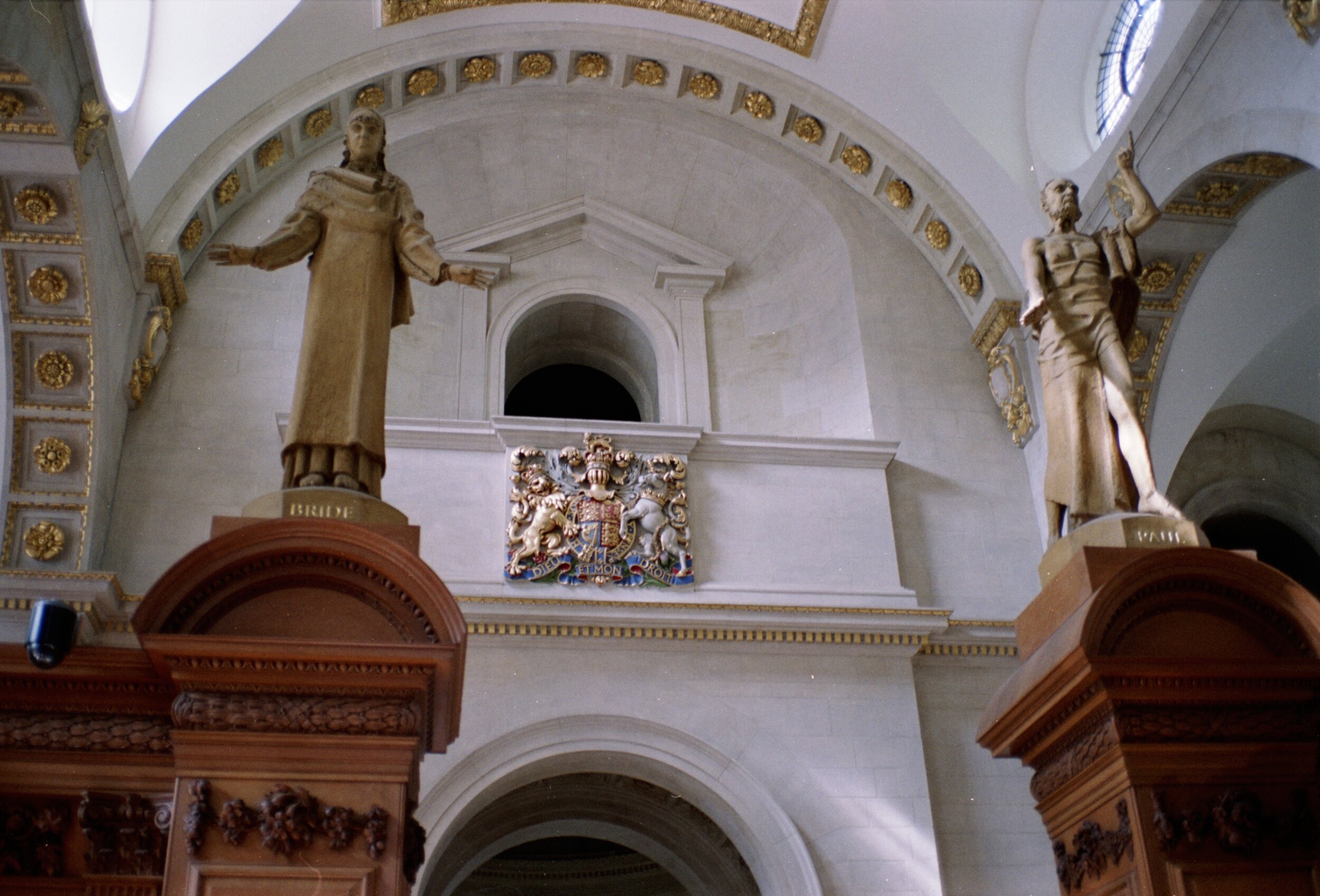
The Bombing of St Bride’s
A Second Great Fire in London
On the night of 29 December 1940, the chief photographer of the Daily Mail, Herbert Mason, climbed to the top of the paper’s building in Carmelite Street clutching his camera. Ahead of him was an apocalyptic scene caused by 120 tons of explosive and 22,000 incendiaries dropped by the Luftwaffe. The City was on fire:
“The greatest of all the fires was directly in front of us. Flames seemed to whip hundreds of feet into the air. Pinkish-white smoke ballooned upward in a great cloud, and out of this cloud there gradually took shape – so faintly at first that we weren’t sure we saw correctly – the gigantic dome of St Paul’s Cathedral.”
Seizing the opportunity, he released his shutter and took one of the most famous photographs of the entire Second World War. A majestic image of smoke and destruction but with St Paul’s acting as a focus of defiance standing above the smoke and destruction.
The image is typically cropped but on the left of the image is another spire which I think must be St Martin within Ludgate, another miraculous survivor of a night that was called the Second Great Fire of London. However, had Mason pointed his camera a little to the left we would have been greeted with a far less optimistic image as the thousand-year-old church of St Bride burnt for the second time in its history.
Of course, the first conflagration was during the (first!) Great Fire of London which destroyed 87 churches (of which only 51 were rebuilt). St Bride’s fell into the category of those that were marked for restoration and Christopher Wren designed the church himself. Work on the project continued with blistering speed and within only a year the walls had reached the upper part of the cornice, a feat that was attributed to the fact that Wren also built a local pub for the workmen next door (the Old Bell Tavern – which is still in place today).
The famous steeple (clearly visible from the office roof terrace) took longer and was, when it was built, Wren’s highest tower at 234 feet. 60 years later, it would be hit by lightning, which took 10 foot off the top. The steeple is also the apparent inspiration for a crucial symbol of adoration. The tale goes that a young apprentice baker fell in love with his master’s daughter and needed to impress. Staring up at the steeple he had sudden inspiration and the tiered wedding cake was born.
By the end of the blitz, all that was left of the church was the exterior walls and the iconic spire. This did not stop the church continuing in its role as a place of worship and there are fascinating photographs of services being held in the bombed-out ruins.
Rebuilding meant looking back at the history of the site and, whilst looking at the foundations, Roman ruins and crypts with thousands of skeletons were found under the building. Somewhat bizarrely, St Bride’s now boasts a collection of 252 skeletons belonging to identifiable individuals. This represents a remarkable source of historical information for those interested in how the human body has changed in the last centuries.
Indeed, St Bride’s itself is a microcosm of the City. Destroyed by catastrophic events, rebuilt and still defiant. Its history tells the story just as well as Herbert Mason’s picture of St Paul’s.
